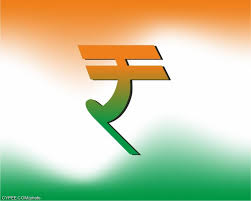New Delhi–The external value of the Indian rupee currently supersedes its internal strength and the resulting mismatch is hurting exporters, whose competitive edge gets hit with the declining value of the dollar vis-a-vis the rupee, industry lobby Assocham said on Sunday.
“External value of rupee is far stronger than its internal strength despite lower inflation with the resultant mismatch, and the continuing trend is hurting exporters whose competitive edge gets directly hit with declining value of dollar against the domestic currency,” Assocham said, citing its report on the subject.
Declining by close to six per cent over the past one year, the rupee is currently trading at 63.63-70, against 66.93 to a dollar in August 2016, Assocham said.
“So, clearly the external value of rupee has strengthened quite,” it added.
 The Associated Chambers of Commerce and Industry of India said that, on the other hand, the rupee has weakened at least in reverse proportion to the Consumer Price Index (CPI), or retail inflation, that is inching up all the same.
The Associated Chambers of Commerce and Industry of India said that, on the other hand, the rupee has weakened at least in reverse proportion to the Consumer Price Index (CPI), or retail inflation, that is inching up all the same.
“Yes, inflation is down; but it is still inflation and not disinflation or deceleration in prices. That means rupee is able to purchase less of commodities (to the extent of 1.58 per cent at least), but when it comes to its value measured against dollar, it has gained by about six per cent,” the Assocham report said.
Owing to this situation, there has been a falling pace of growth exports.
While exports have been growing for the last nine months ending June 2017, the Reserve Bank of India (RBI) observed that the export growth weakened in May and June from the April peak as the value of shipments across commodity groups either slowed or declined.
“Exports have shown growth of 4.39 per cent to $23.56 billion in June 2017, as compared to $22.57 billion a year ago. But this growth had peaked to 20 per cent in April this fiscal,” the statement said.
Moreover, thanks to declining value of dollar in rupee terms, during June 2017 exports showed a negative growth of 0.04 per cent, it added.
“It clearly translates into erosion in margins between six to seven per cent only on account of currency appreciation and the trend is likely to continue on the back of robust inflows in the stock market,” Assocham Secretary General D.S. Rawat said.
The inflows of the dollar, taking the country’s foreign exchange reserves to a record level of $392 billion, “are a result of global liquidity flush finding ways into the financial markets of the emerging economies,” he added. (IANS)






